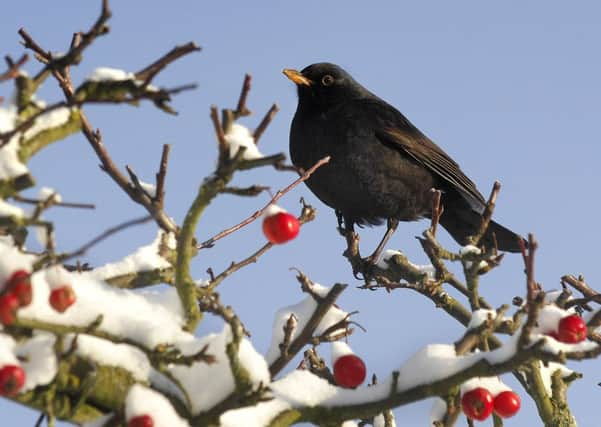Northumberland, Bird Club


It’s not the easiest place to get to, but the RAF makes flights twice a week. It used to refuel on Ascension Island, but that is not possible now as the runway has potholes. Other airlines fly via South America.
Tim told of his excitement on Ascension Island at seeing green turtles laying their eggs and the babies scurrying out to sea. Only about one per thousand survive to adulthood.
Advertisement
Hide AdAdvertisement
Hide AdThe main islands are East and West Falkland. In summer temperatures are in the region of 18C, but it is always windy and the weather might change four times a day. Sheltered parts can feel ‘Mediterranean’ in summer, with palm trees. In winter it rarely falls below -3°C, but the windchill is bitter.
Crystal clear waters surround the Falklands, but even here plastic waste can be found. There are few trees.
The capital is Stanley and beside the cathedral is a whalebone arch to commemorate the whaling industry of times gone by. There are no traffic lights, roundabouts or cashpoints. A 40mph speed limit stands throughout.
About 3,000 people live on the Falklands, mainly in Stanley, with 1,200 military personnel stationed 40 miles away at Mount Pleasant. Cruise ships bring 60,000 visitors per year to boost the economy.
Advertisement
Hide AdAdvertisement
Hide AdSome 200 species of birds have been recorded, many in breeding pairs numbering many thousands, including five species of penguin: the king, gentoo, magellanic, macaroni, and 36 per cent of the global population of rockhopper penguin. They are very approachable, as are the caracaras. Sixty per cent of the world population of black-browed albatross reside on the Falklands.
Other Falkland specialities are silvery grebe, long-tailed meadowlark, Cobb’s wren, black-necked swan, pale-faced sheathbill, blackish oystercatcher, magellanic oystercatcher, king cormorant, red-backed hawk, striated caracara, southern caracara, Falkland steamer duck, flying steamer duck, Falkland skua, ruddy-headed goose, black-crowned night-heron, kelp goose, dolphin gull, kelp gull and turkey vulture. Mammals include southern elephant seal, southern sea lion, South American fur seal and killer whale.
Opportunities to see all that the Falklands has to offer can be had by island-hopping and staying at comfortable lodges.
Tim recounted how he used to take children from the British Forces School on free helicopter rides to see the amazing wildlife.
Advertisement
Hide AdAdvertisement
Hide AdChairman Richard Poyer thanked Tim for his extremely interesting and enjoyable presentation.
The next meeting is at Bamburgh Pavilion on Friday, March 9, at 7.30pm. It is entitled Sea Birds at Kielder, by Martin Davidson.